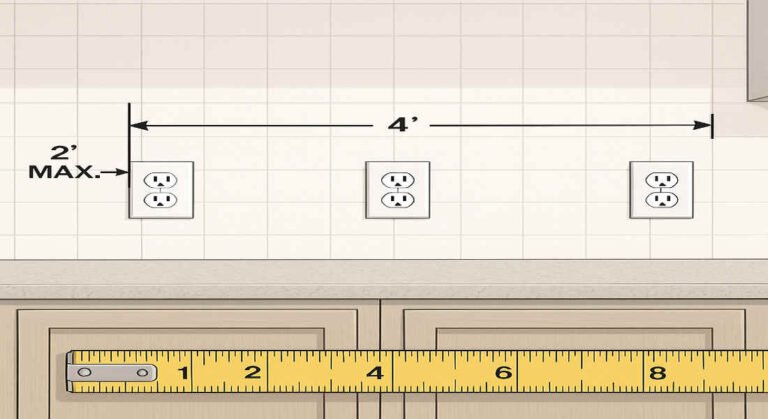When designing or renovating a kitchen, one of the most overlooked yet crucial aspects is the placement of electrical outlets. Proper placement of outlets not only ensures safety but also makes your kitchen more functional and convenient. Imagine trying to plug in a mixer or coffee maker only to find that there isn’t an outlet nearby, or worse, stretching cords across the countertop in a way that creates hazards. This is why understanding the right spacing for kitchen outlets is essential.
Understanding Electrical Outlet Placement in Kitchens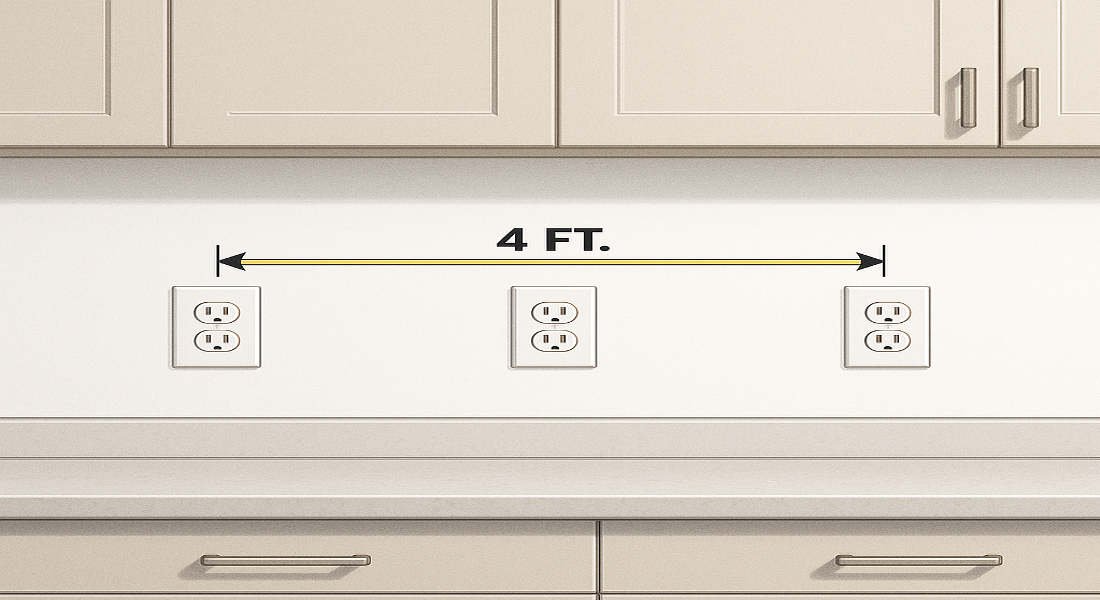
Why Does Outlet Placement Matter?
The kitchen is one of the busiest parts of any home. It’s where you prepare meals, brew coffee, use appliances, and sometimes even entertain guests. With so much activity, proper outlet placement is crucial for:
- Safety: Avoiding overloaded circuits and reducing risks from stretched or tangled cords.
- Convenience: Ensuring appliances are easy to plug in without constant rearrangement.
- Efficiency: Minimizing interruptions by having enough outlets for all your kitchen gadgets.
The Role of the National Electrical Code (NEC)
The NEC is a set of standardized safety codes for electrical wiring and installations in the United States. It provides clear guidelines on how far apart outlets should be in a house kitchen, ensuring safety and functionality. While the NEC offers general rules, local codes may vary slightly depending on your area, so it’s always important to verify your local regulations.
By following these codes, you not only create a safer home but also ensure compliance with building standards, which can help you avoid fines or complications during the resale of your home.
How Far Apart Should Outlets Be in a House Kitchen?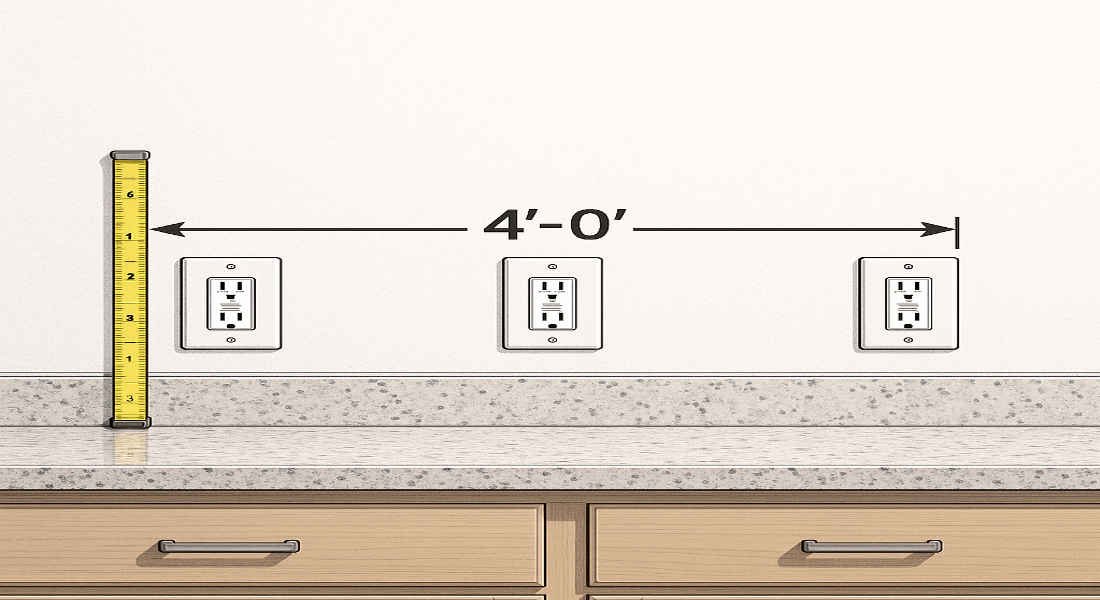
NEC Guidelines for Kitchen Outlet Spacing
According to the NEC:
- Outlets on kitchen countertops should be placed at least 48 inches apart from each other.
- No point along the countertop should be more than 24 inches from an outlet.
- This ensures that small appliances with average cord lengths can be plugged in without stretching.
- Any countertop section 12 inches or wider must have an outlet above it.
You may also read (finding the perfect kitchen runner rug size for your home).
Why These Measurements Matter
The logic behind these rules is simple: Most small kitchen appliances, such as toasters, blenders, and coffee makers, have cords that are about 2 feet long. By spacing outlets no more than 48 inches apart, the NEC ensures that appliances can be plugged in without the need for extension cords, which can pose safety hazards.
Placement Height Guidelines
- Outlets are typically installed not higher than 20 inches above the countertop.
- For kitchen islands and peninsulas, where walls may not be available, outlets can be installed on the side of the island or just below the edge of the countertop countertops.
Special Considerations: Sinks and Cooktops
- Outlets should be placed at least 12 inches away from sinks to avoid exposure to water.
- For cooktops or ranges, outlets should be positioned at least 4 inches (100mm) away to prevent heat damage or spills.
Local Code Variations
While the NEC provides a strong foundation, local electrical codes may have additional requirements or slight differences. Always consult your local building department or a licensed electrician to ensure compliance with local regulations.
Additional Kitchen Outlet Placement Considerations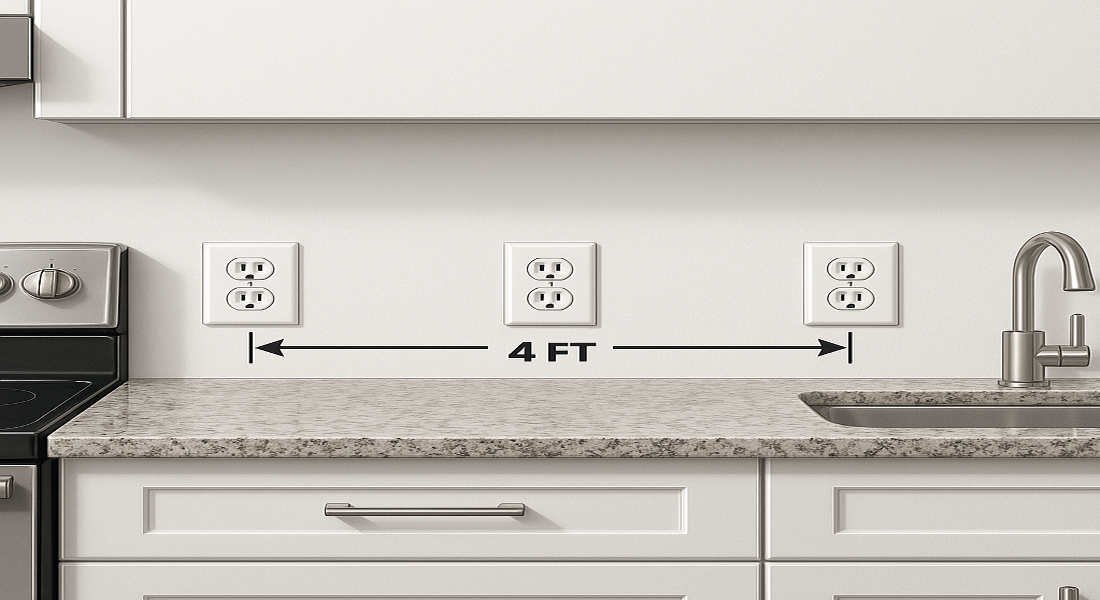
Outlets Near Heat Sources
When placing outlets near cooktops or ovens, ensure they are far enough away to avoid heat damage or accidental splashes. A minimum distance of 4 inches is recommended, though local codes might specify more.
You may also read (understanding femas role in home inspections).
Outlets Near Water Sources
Water and electricity don’t mix, which is why outlets near sinks must be carefully positioned:
- Place them to the side of the sink rather than directly above or behind it.
- Use GFCI (Ground Fault Circuit Interrupter) outlets, which automatically shut off power in case of a short circuit or water exposure.
Amperage Ratings for Kitchen Outlets
Kitchen appliances often draw a significant amount of power, so it’s essential to match the amperage rating of your outlets to your circuits.
- 15-amp outlets are suitable for smaller appliances, such as toasters or blenders.
- 20-amp outlets are better for heavy-duty appliances such as microwaves or large mixers.
Importance of GFCI Outlets
In addition to being required by code, GFCI outlets provide an extra layer of safety by cutting power when they detect faults or water exposure. They are mandatory for all outlets within 6 feet of a water source in the kitchen.
Practical Tips for Planning Kitchen Outlet Placement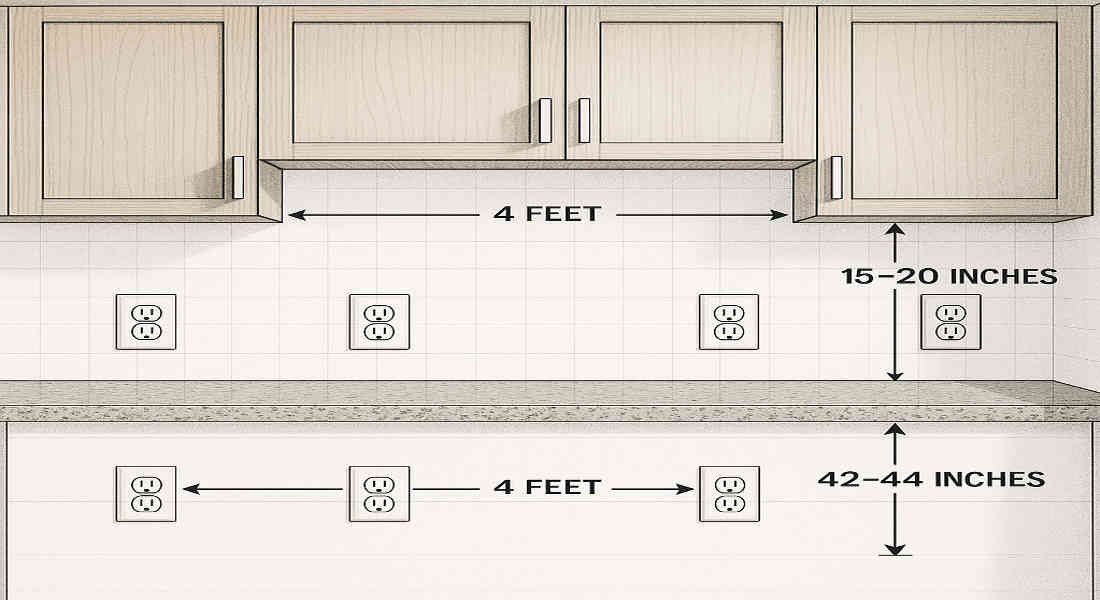
Assess Your Kitchen Layout
Take stock of your kitchen’s layout and existing countertop space. Identify areas where you’ll use small appliances frequently, such as near the stove, sink, or coffee corner.
Account for Appliance Types
Think about the types of appliances you use regularly. For example:
- Do you need outlets for a built-in microwave or refrigerator?
- Will you have space for a coffee maker and toaster on the same counter?
Match Outlet Heights
For a clean, consistent look, align outlet heights with light switches or other outlets in the room. This creates a polished aesthetic while ensuring functionality.
Plan for Future Needs
Kitchen technology is always evolving. Consider installing extra outlets or USB charging ports for future appliances or smart kitchen gadgets.
Work with a Professional
Planning outlet placement can be challenging, especially when navigating local codes or complex layouts. Always consult a licensed electrician for professional advice and installation.
Common Mistakes to Avoid in Kitchen Outlet Placement
- Placing Outlets Too Far Apart
- This forces you to use extension cords, which can lead to safety hazards.
- Ignoring Local Code Requirements
- Failing to comply with local regulations can result in costly fines or necessitate rework.
- Improper Placement Near Water or Heat
- Installing outlets too close to sinks or cooktops without GFCI protection increases the risk of accidents.
- Using the Wrong Amperage
- Plugging high-powered appliances into low-amperage outlets can cause circuit overloads and damage to the electrical system.
Benefits of Proper Kitchen Outlet Placement
- Enhanced Safety: Reduced risk of electrical hazards like short circuits or overloaded circuits.
- Improved Convenience: Easy access to outlets wherever you need them.
- Code Compliance: Avoid fines and ensure your kitchen meets building standards.
- Increased Home Value: A well-designed, code-compliant kitchen is a selling point for potential buyers.
You may also read (kitchen shears in your home).
